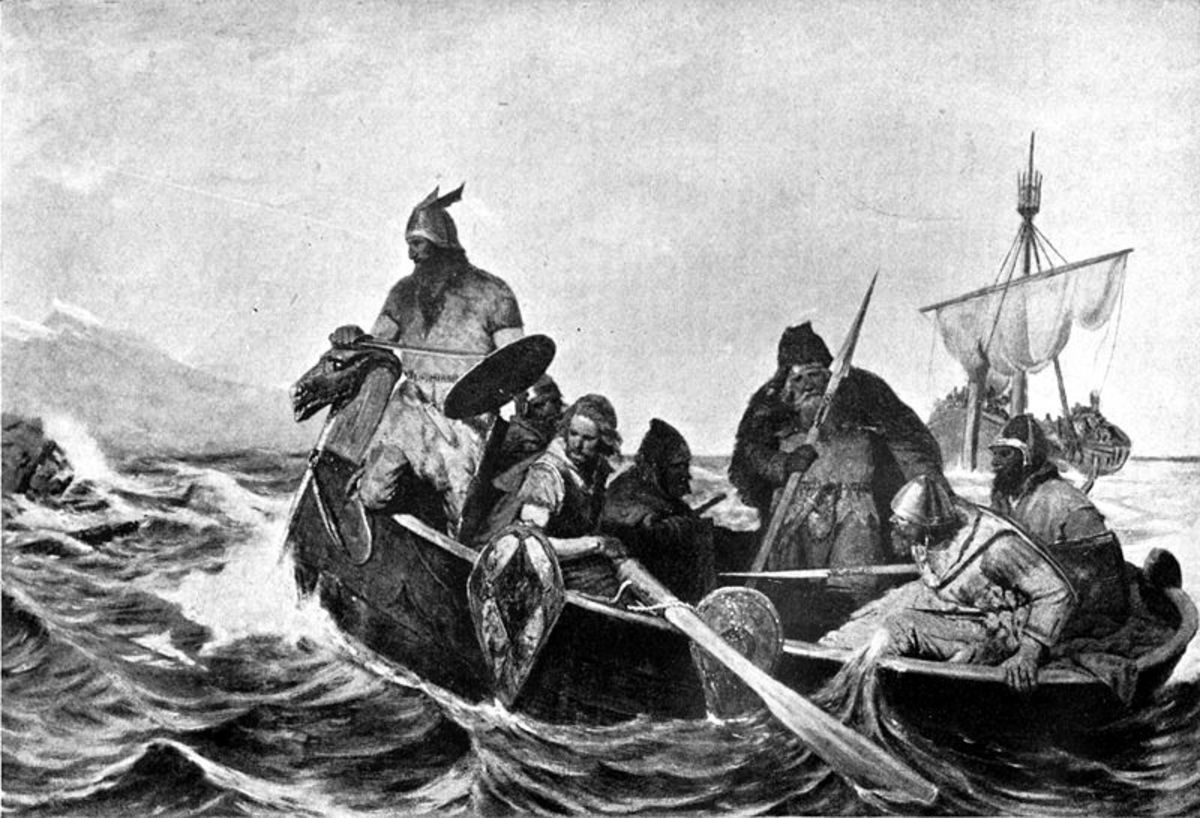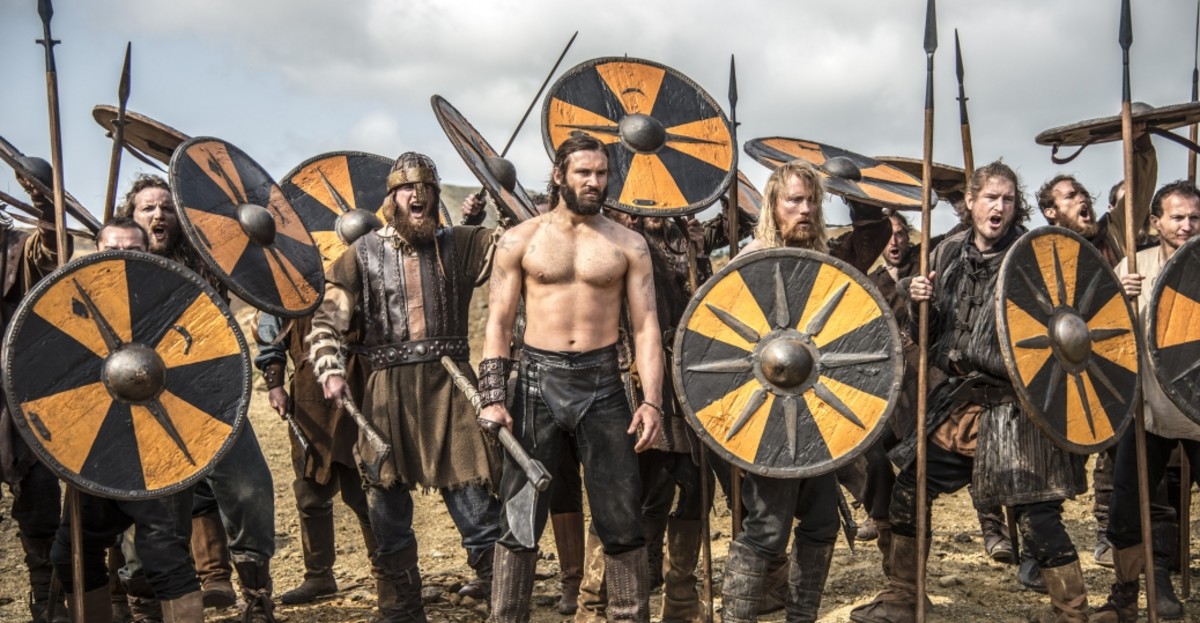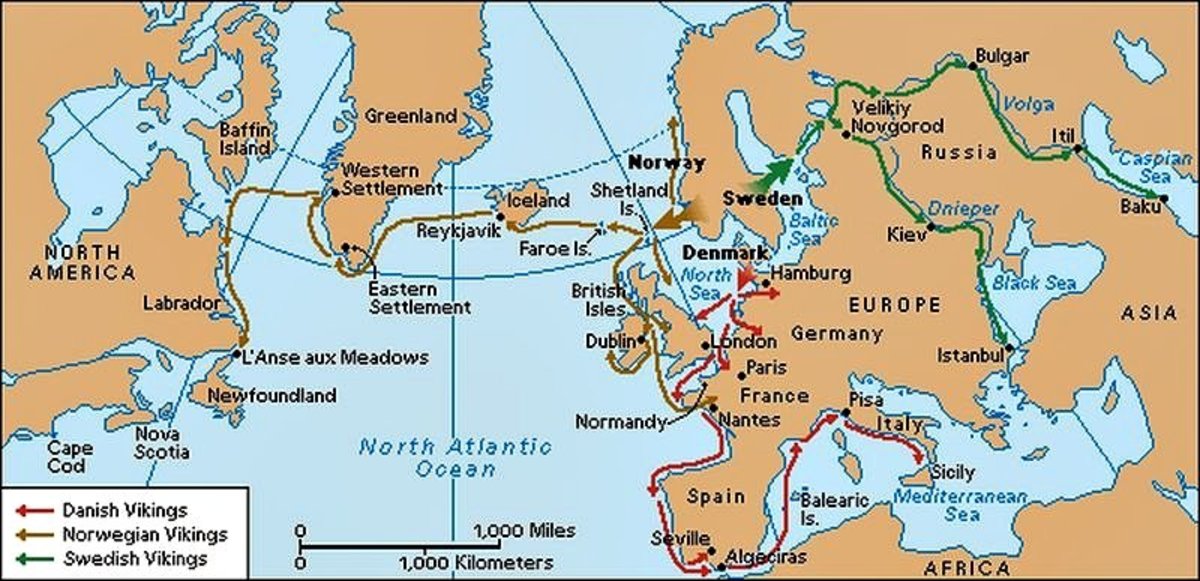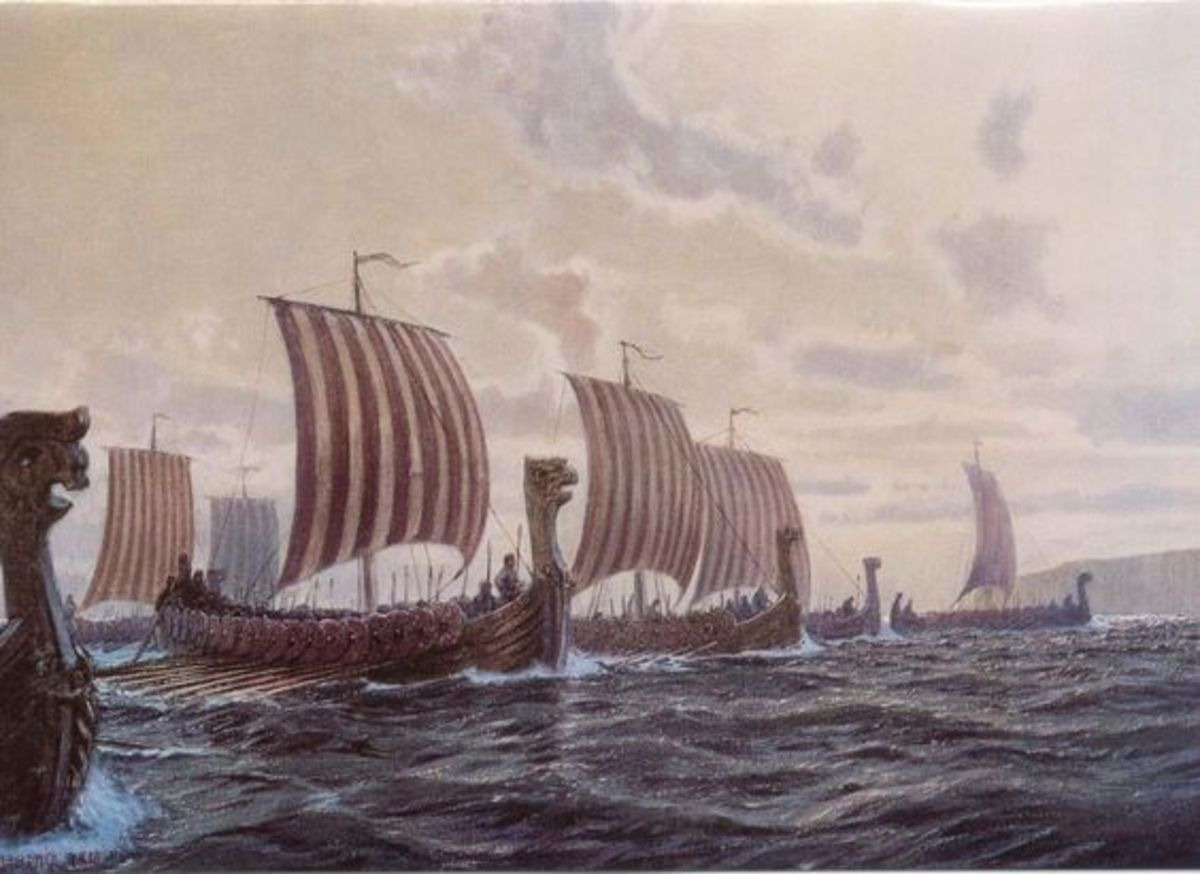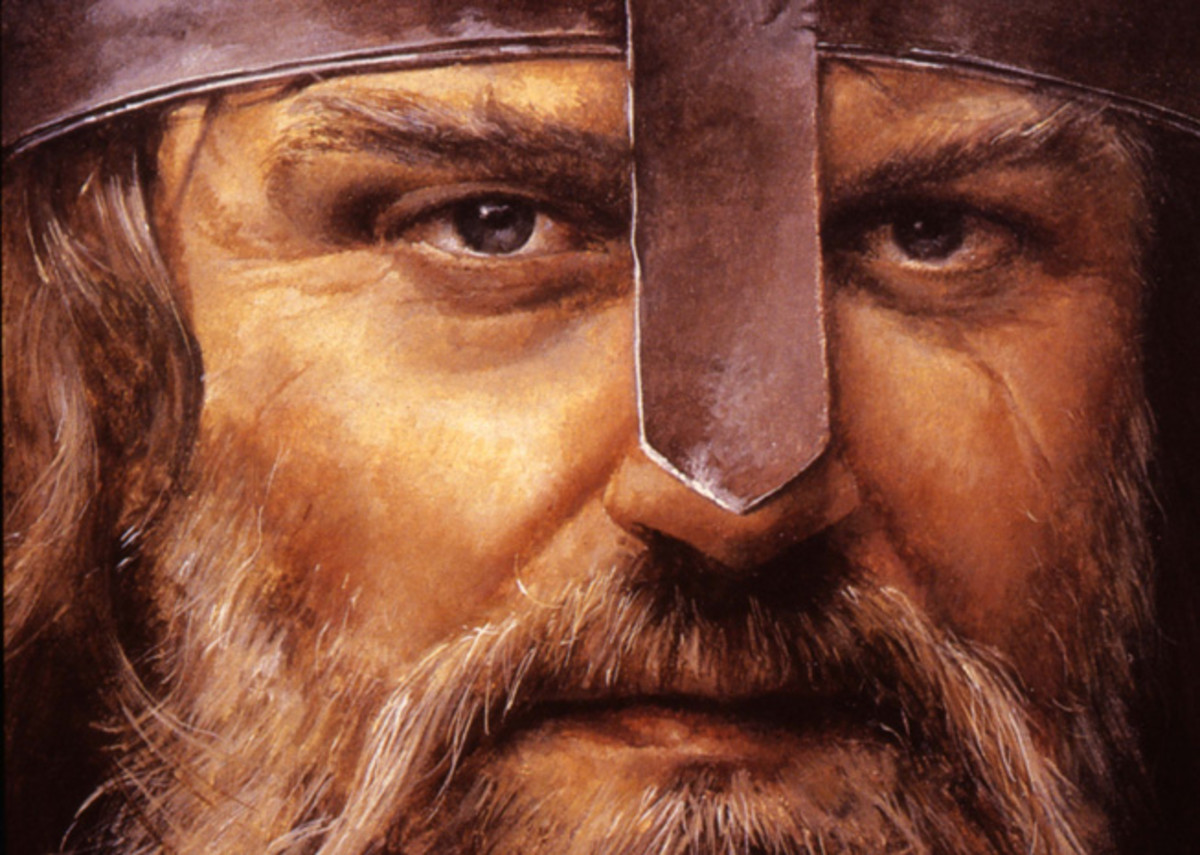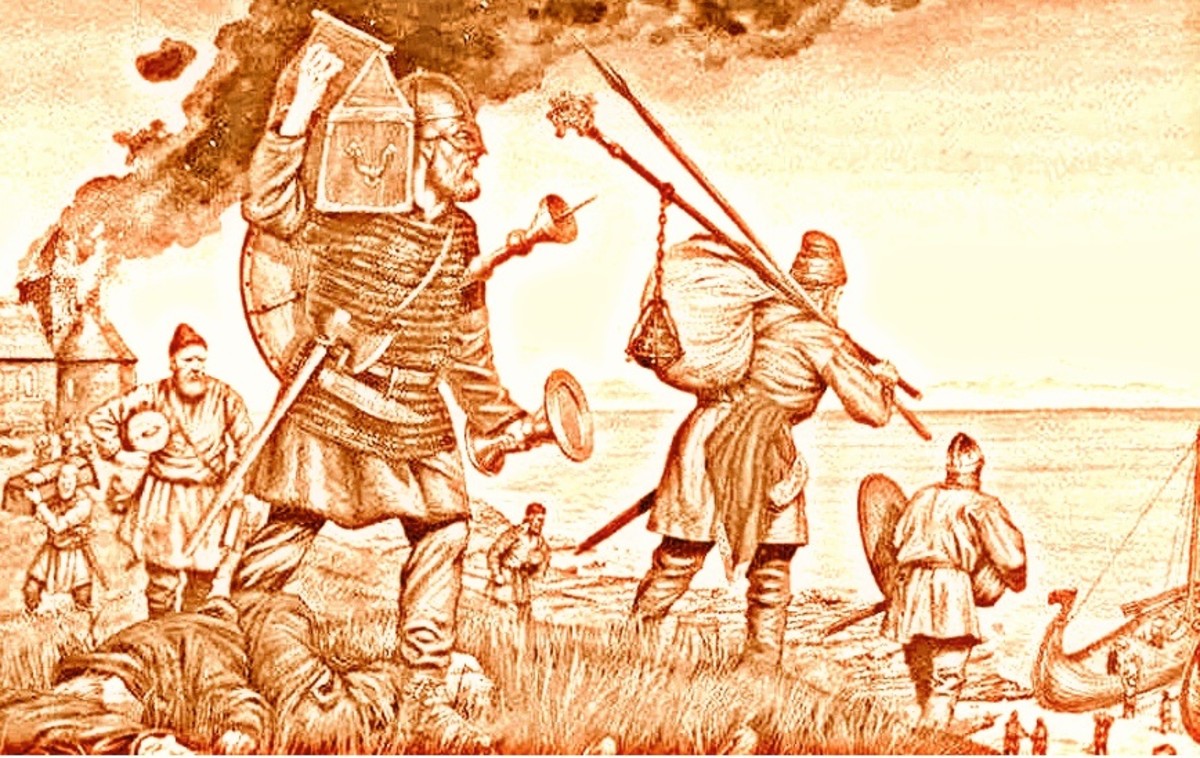- HubPages»
- Education and Science»
- History & Archaeology»
- History of Europe
Viking - 14: Paring Njord's Salty Furrows - Cross Oceans the Viking Way, Steer for Where the World Seem to End
"Wake early if you want another's life or land. No lamb for the lazy wolf, no fight is ever won in bed".
Havamal
Crossing the wide blue yonder. What is there, yonder, to steer out of your way for. where white-peaked waves thrash the shore?
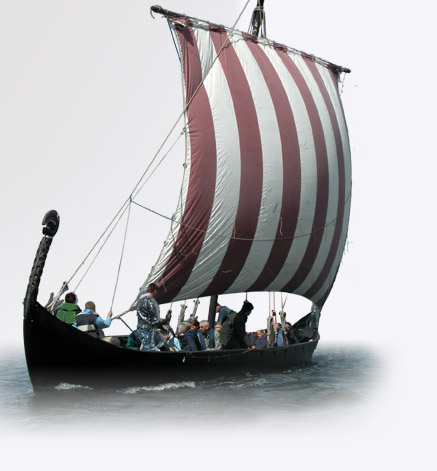
In search of new horizons and easy gain
What stands out in history about the Vikings is their mobility, their freedom of movement.
Early on they were not bound by treaties or given ways of doing things. Raiding parties turned their underlying violence into an art form. As time wore on the nature of warfare changed. Paid sword-arms - mercenaries - were widespread and the day came when the Vikings consolidated their land gains. The great army swore to peace with Aelfred in AD876 on a sacred ring. The settlement of the east midlands, formerly Mercia, was now the Danelaw to the south and north of which were the also-defeated East Anglia and Northumbria.
Their freedom of the seas during the Viking Age was dependent on unequalled skills as shipbuilders and sailors. Alcuin of York showed surprise in their ability to swoop on the east coast of Northumbria in AD793. The surprise element was due more to their daring in attacking 'out of the blue' than to their skills in shipbuilding or sailing. In the accumulation of sailing and navigational skills nowhere was going to be safe.
They were also soon to show a talent for switching from oars to saddles. This was first demonstrated in AD866 when the Danes of East Anglia under Guthrum showed at York. In AD885 a siege at Rochester led to the abandonement of the horses for oars. This sudden loss of land mobility led to them leaving the Kentish shore for Frankia's rivers. However the Norsemen were never natural cavalrymen, the preferred way of fighting being on foot - whether on land or deck - and sea fighting brought together seamanship and weapon skills. Here ships were roped together in pontoon style or in blocks, allowing for mutual support between crews. The lines would draw toward one another and once first blows had been traded the struggle began to gain the upper hand. Lack of leeway limited tactics, although ships that drew away from the fighting on one flank might join the fray elsewhere.
Sea battles were always fought close to land. In some cases coastal features dictated strategy. In AD896 three Viking ships were trapped by their own moorings and destroyed by Aelfred's fleet on the coast of Hampshire. Aptly skilled and equipped defenders could easily match the Norsemen in their own waters.
A late 9th Century introduction into fighting came about with fort building by both Danes and Saxons. Often fortifications were hastily thrown up, temporary affairs unlike those built by the Danes at Trelleborg and Fyrkat where Danish forts have been identified by archaeologists, featuring ditches with steep embankments below vertically-timbered walls. The siege of Rochester could have seen a lower wall built outside the town walls, to be used as a base for the Danes. In AD894 Aelfred blockaded their camps at Appledore and Milton, forcing their hasty abandonement.
As havens for raiding the Danes favoured out-of-the-way coastal regions and eyots when needed. Sometimes they were fortified, mostly not, as their locations were generally secure enough not to be seen. Besides which, they themseves controlled many of the seaways.
Often the Danes and West Norse fought one another, sometimes in unlikely situations, as at London Bridge during the later reign of Aethelred II, 'Unraed', when three ships of his new-found ally Olaf Haraldsson pulled the bridge from its moorings with Knut's Danes on it - 'London Bridge is falling down...' was originally a poem dedicated to Olaf's intended bride, 'my fair lady'
Next: 15 Leadership Skills
Feel the energy of the wind and the waves...!
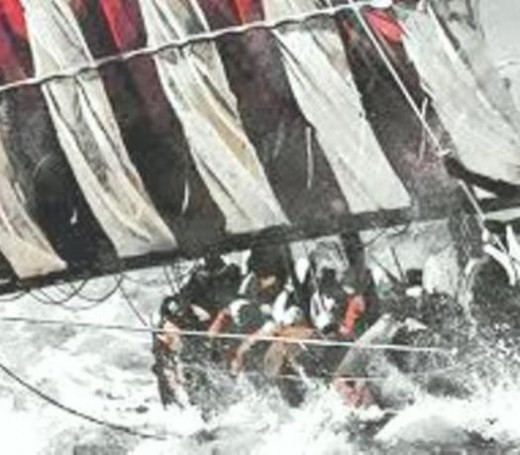
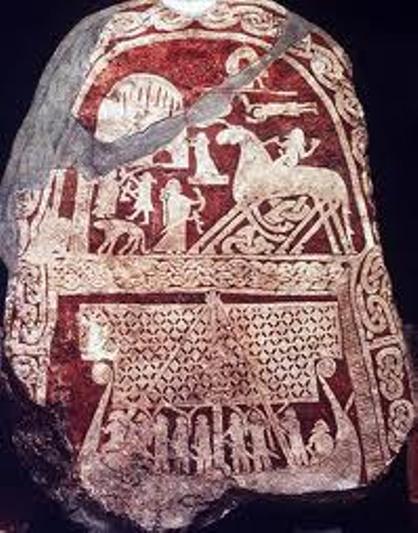
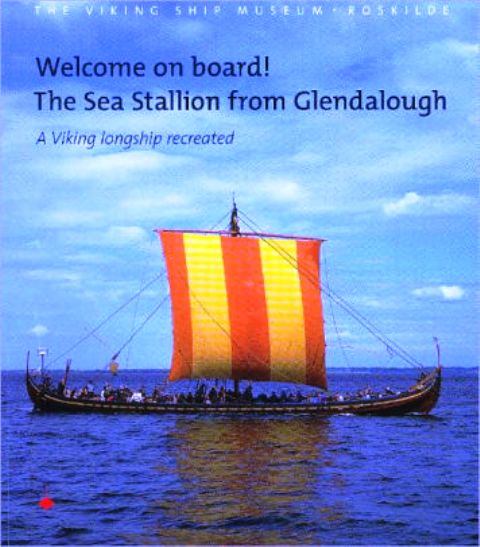
The definitive reconstruction of a Danish ship found on the bottom of Roskilde Fjord from the 11th Century. 'Sea Stallion' was found to have been built with Irish oak from near Glendalough, a large lake to the west of Dublin.
When completed a crew was assembled from volunteers who sailed her from Roskilde via western Norway to the Northern Isles, via the Irish Sea to Dublin. This book gives you the detailed construction and terminology of Viking-age ships. Full colour, with diagrams and explanations. Quality writing that doesn't patronise the reader.
Far-flung shores that beg to be trodden, unknown trade to be begun with trading partners who can offer new wealth, markets for our swords, our furs...
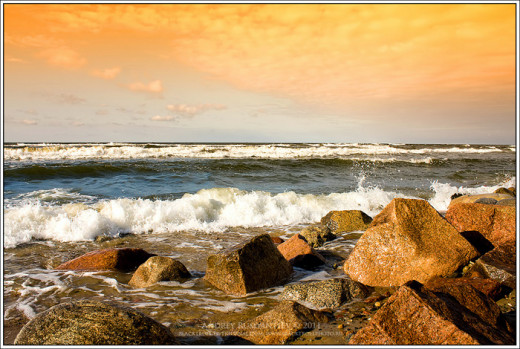
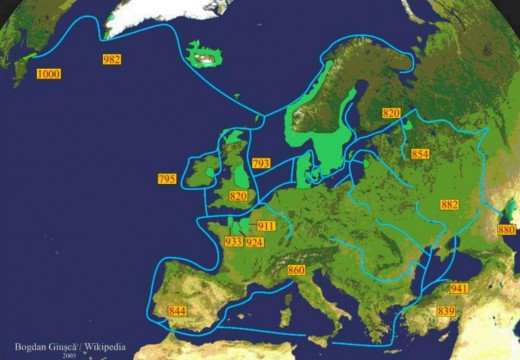
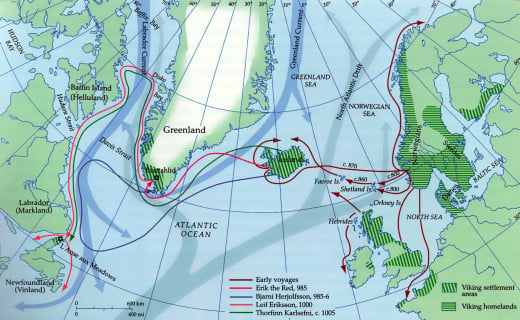
See also the two later pages
On Norse and Viking Seafarers (Vikings were generally raiders), traders or jarls' and kings' fleets used the same technology - you would hardly know Vikings from their compatriots by their sails or the cut of their ships.
The two pages on seafarers and their ships are:
VIKING - 11: SEAFARERS' Marine Technology (1)
VIKING - 12: SEAFARERS' Marine Technology (2)
Enjoy the read
Understand the way Norsemen thought, their search for new horizons could mean a desire for trade...
Or it could mean a desire for easy gain.
Often the gain was easier than they'd expected, sometimes their inroads proved to be traps, laid by canny kings or leaders who understood their thought processes and lured them to death or slavery.
No matter, a life was for seeking out new experiences. Odin would take them in to his hall in Asgard if they died sword-in-hand, to fight again by day, feast through the night with a willing wench to help slake your thirst and hunger..
A slave's life led only to dishonour. Best fight your way through or out, even if it means living your last hours and leaving life no worse off than when you came into it!.
© 2011 Alan R Lancaster


